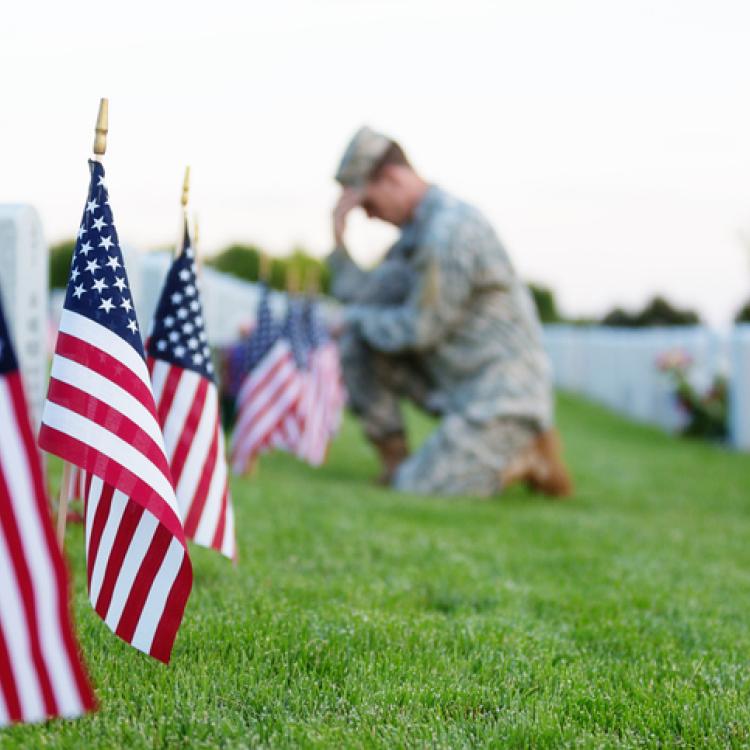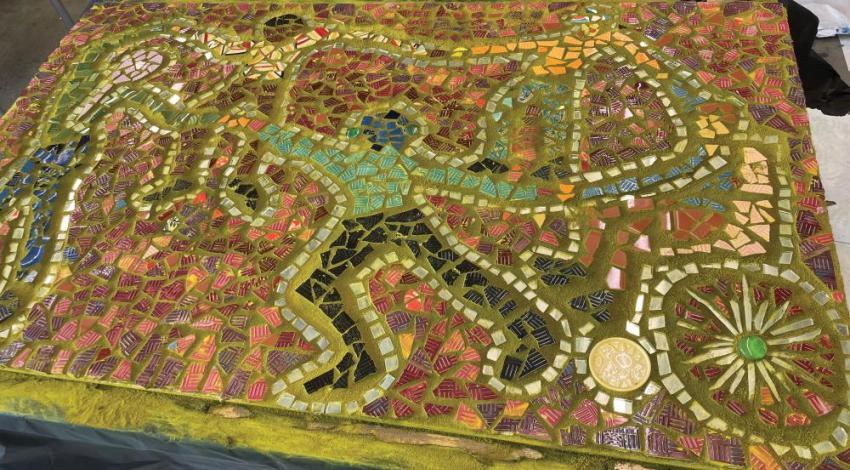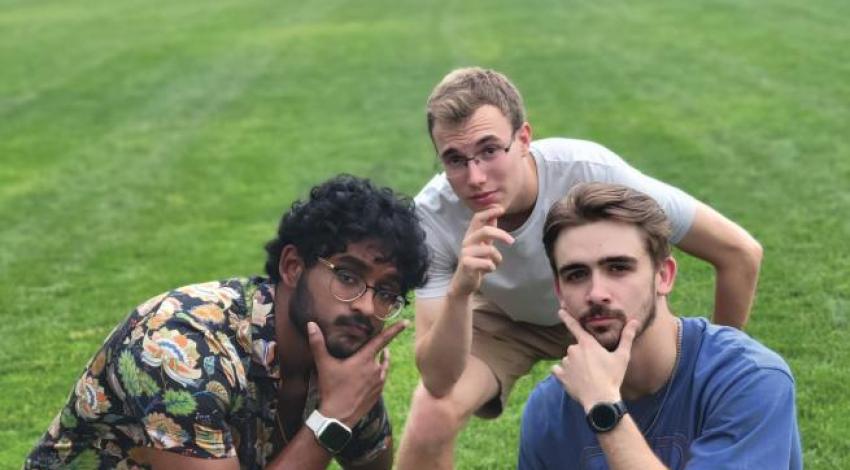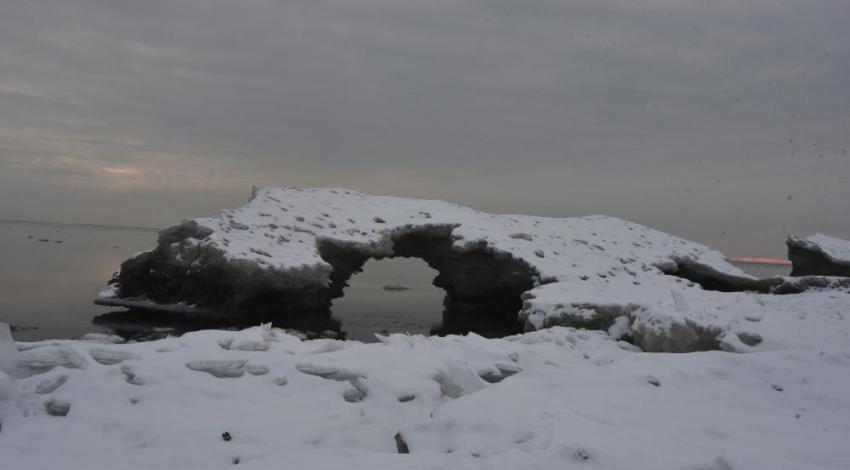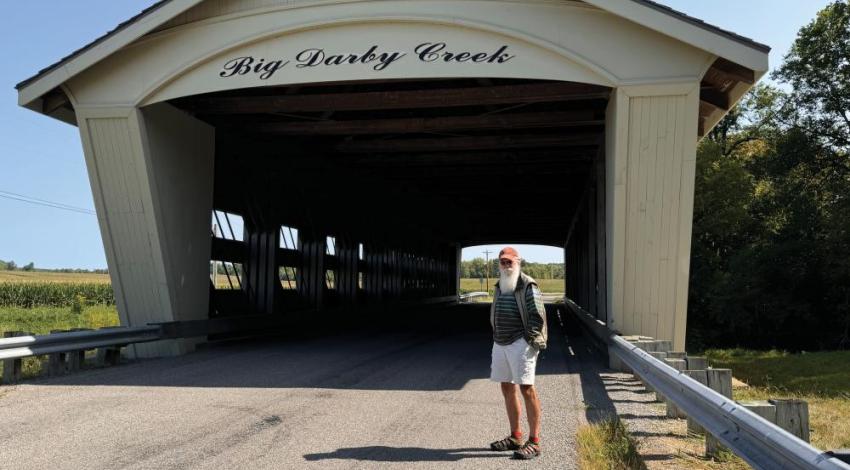Editor's note: Author Christine Schafrath is a South Central Power Company member and a social studies educator for Reynoldsburg City Schools and Columbus State Community College. She has a passion for history, especially from the Founding to Civil War periods, which she shares with Ohio Cooperative Living members with this piece on the first Memorial Day. She describes the message as "one of both patriotism and unity" and we think you'll find it as inspiring as we do.
Each Memorial Day, I spend the day, as many Americans, reveling in warmer temperatures and basking in the first sights and scents of summer amid parades and picnics. With images of the Stars and Stripes held high in honor, and veterans marching in unison, patriotism permeates the day. In years past, it was not uncommon for friends and family to approach and thank my beloved grandfather, a highly decorated World War II Army veteran for his service to the United States. He, with angst and sadness, always redirected these sincere, although misguided comments of gratitude and honor to the service members who have given the ultimate sacrifice of their lives for the comfort and enjoyment of our liberty. Our living service members understand more than anyone else the significance of this sacrifice, and they do not want attention directed upon them. For it is their fallen comrades, their dear friends, brothers, sisters, mothers, and fathers who do not get to enjoy the fruits of spring’s rebirth. Honor is due them, and them alone, on this solemn day.
Recently, I set out to learn more about the origin of Memorial Day, and I found a story, which was originally recounted by Yale University professor David W. Blight in his article “The First Decoration Day.” To my surprise, I soon realized that the origin of Memorial Day, first called Decoration Day, began at the time of the second birth of our nation, and its very heritage demonstrated a rebirth of the principles of life, liberty, and pursuit of happiness promised by the Declaration of Independence. These founding principles were exemplified through the honorable actions of thousands of dedicated Charleston, South Carolina, freedmen and freedwomen. During the spring of 1865, these individuals dedicated their first days of liberty to the arduous work of providing a proper and respectful burial for 257 Union troops at the Washington Race Course outside of Charleston. After enduring unimaginable sickness and suffering in the prison camp, the deceased Union soldiers were discarded into a mass grave. The newly freed slaves would not allow such an injustice to remain uncorrected, so they built a formal cemetery on the grounds, lined it with a fence, and created an entrance sign with the words “Martyrs of the Race Course” hanging overhead. Then, on May 1, 1865, at this site, which is known in the present day as Hampton Park, the first organized celebration honoring the fallen victims of the Civil War took place. The former Washington Race Course turned Confederate-operated prison camp turned cemetery became the site where African American service members and families gathered alongside white soldiers and community members to celebrate freedom and the promise of equality previously impossible to uphold in American history.
From planning to fruition, the task was led and facilitated by African American community members who led the effort to honor fellow service members who had died in the service of the United States and for the cause of freedom and political equality for African Americans. I cannot even imagine the emotional, physical or sensory challenges that were connected to this completion of this heroic task. The Antebellum period has often been labeled the Second Founding of the United States because, with the end of slavery, it was the first genuine opportunity for all Americans to enjoy the blessings of individual liberty. Clearly, this realization drove the gratitude evidenced in this horrendous work.
This story speaks to the heritage of rebirth and reconciliation of American ideals more than any other. The Union troops had fallen in their fight to free fellow men from the bondage of slavery and realize for them the promise of liberty in accord with the Declaration. In their newfound liberty, the African American community members did not simply have a parade and a picnic as we do today. Instead, they exemplified a profound love of fellow man and country by providing an honorable burial for their fellow comrades in arms with the same spirit of sacrifice, which had motivated the service of those buried in that Washington Race Course mass grave.
Once the cemetery was constructed and the dead honorably lain, many more members of the African American community (men, women, and children) joined with remaining Union troops, including the 54th Massachusetts and the 34th and 104th U.S. Colored Troops, white missionaries, teachers, and clergy members of Charleston on May 1, 1865, to hold a parade paralleled or surpassed by few in the modern times. All told, up to 10,000 people participated in the first Decoration Day.
David Blight described the awe-inspiring scene:
“At 9 am on May 1, the procession stepped off led by three thousand black school children carrying armloads of roses and singing "John Brown's Body." The children were followed by several hundred black women with baskets of flowers, wreaths and crosses. Then came black men marching in cadence, followed by contingents of Union infantry and other black and white citizens. As many as possible gathering in the cemetery enclosure; a childrens' choir sang "We'll Rally around the Flag," the "Star-Spangled Banner," and several spirituals before several black ministers read from scripture. No record survives of which biblical passages rung out in the warm spring air, but the spirit of Leviticus 25 was surely present at those burial rites: "for it is the jubilee; it shall be holy unto you … in the year of this jubilee he shall return every man unto his own possession."
Men, women, children, black and white, standing side by side, honored the war dead in a showing of respect unparalleled to any I have ever experienced and then proceeded to spend the day together listening to patriotic speeches and enjoying picnics. The mental visualization of the event brings tears to my eyes when considering the life’s work and vision of Abraham Lincoln. He knew and frequently spoke about the fact that the nation could not carry on divided over slavery. On June 16, 1858, in his famous House Divided Speech, Lincoln said, “A house divided against itself, cannot stand. I believe this government cannot endure, permanently, half slave and half free. I do not expect the Union to be dissolved — I do not expect the house to fall — but I do expect it will cease to be divided.” Lincoln, believing in the strict construction of the Constitution, did not believe it was in his Constitutional capacity as president to end slavery. He opposed slavery but believed first in preserving the nation above all else. If the nation was lost, the promise of liberty was lost for all. Nevertheless, when given the opportunity to free slaves in a means consistent with proper use of his war powers as Commander in Chief, Lincoln issued the Emancipation Proclamation.While he lost his own life on April 14, 1865, he undoubtedly would have celebrated the event as evidence of the fulfillment of his life’s work. His beloved United States was whole once again; the 13th Amendment, for which he had advocated, had passed Congress and was awaiting ratification, and citizens black and white were standing together, mourning together, and celebrating freedom and “the pursuit of happiness” together in that Charleston, South Carolina, community. Sadly, we know this event would not immediately herald in the realization of equality for which these individuals deserved and would hope to achieve, but its promise was finally possible and deeply symbolic to those who participated at these events at Washington Race Course.
After hearing this story, one might assume that this community might receive the honor of being declared the torchbearers of the first formal Memorial Day, yet sadly, this is not the case. That designation was given to the small village of Waterloo, New York, where a year later, on May 5, 1866, when community leaders orchestrated a formally planned and organized event. The specific facts of the conception of that event remain vague. A druggist named Henry C. Welles suggested the idea to friend and fellow resident, General John B. Murray, who spearheaded the planning of the first Decoration Day in Waterloo.
The event would be little remembered until the centennial celebration in Waterloo in 1966. That year, New York Gov. Nelson Rockefeller proclaimed Waterloo, a small village in Seneca County, New York, as the "birthplace of Memorial Day." The declaration was supported in the United States Congress by House Resolution 587 on May 17, 1966, and affirmed by concurrent resolution of the Senate on May 19 of that year. In Proclamation 3727, Lyndon B. Johnson stated,
"By House Concurrent Resolution 587, the Eighty-ninth Congress has officially recognized that the patriotic tradition of observing Memorial Day began one hundred years ago in Waterloo, New York. In conformity with the request contained in that concurrent resolution, it is my privilege to call attention to the centennial observance of Memorial Day in Waterloo, New York, on May 30, 1966."
Ironically, the troops of New York’s 127th Infantry served as city garrison in Charleston at the time of the May 1, 1865 freedmen’s memorial at the Washington Race Course. While these troops were not residents of Waterloo or surrounding communities, one wonders if the word of this initial observance had not made it from this Staten Island regiment back to the Waterloo community, inspiring the idea for an annual celebration similar to the one the previous year. While we may never be able to make this connection, there is ample evidence to support the notion that throughout the recently reunited nation, communities were committed to honoring their war dead in similar fashion. Columbus, Georgia and Macon, Georgia also have made informal claims of having the first Memorial Day ceremony, and countless other communities held similar services after Waterloo in 1866. While these valuable observances were all intended to honor the lives and sacrifices of deceased veterans, clearly, the first, most symbolic and poignant event took place on May 1, 1865 in Charleston, South Carolina.
As you celebrate Memorial Day this year, take a moment to remember those who have served and sacrificed in the same spirit as those noble and dedicated freedmen and women and those fallen Union soldiers did so long ago. While these people showed patriotism and unity of mankind in ways that seem to escape us in the modern day, we can use them as an example of human greatness. This Memorial Day, let us honor those who have given their lives in the effort to secure for us “life, liberty and the pursuit of happiness.”
